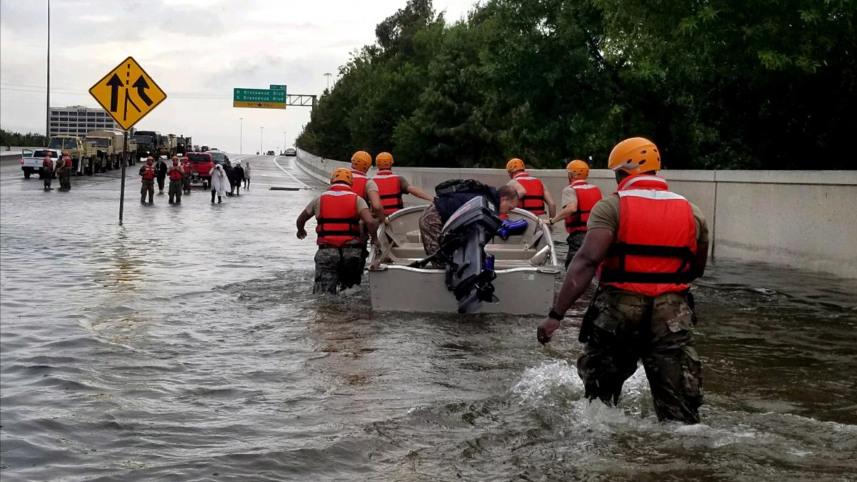Extreme weather events are occurring across the country and around the world. Just to name a few recent events in the U.S., 2017 has seen a record swing from drought conditions to the wettest winter in California history; the earliest tornadoes in Massachusetts and Minnesota history; hurricanes Harvey, Irma, and Maria in rapid succession; and record wildfires, again in California. Surely something is screwy, right?
The influence of climate change on the frequency and intensity of extreme events is also being talked about more and more in the scientific literature and the public domain. The recently released Climate Science Special Report warns that “changes in the characteristics of extreme events are particularly important for human safety, infrastructure, agriculture, water quality and quantity, and natural ecosystems.”
I was a teacher in Houston for many years before joining NCSE this summer. If I were still teaching there, I know I would want to incorporate Hurricane Harvey into my teaching about climate change. Place-based teaching is one of the most effective ways to teach about climate change because it engages students with relevant real-world problems, focuses on solutions, and relates to the student’s own experiences.
Extreme weather events beg to be incorporated into the teaching of climate change. Each of the events I mentioned have the earmarks of a teachable moment. But when you actually try to teach about them, you are quickly faced with two challenges.
First, the science of extreme weather is nascent and complex. Extreme weather events, by their very nature, are relatively rare, and it takes time to see statistically significant patterns. While it is possible to attribute certain aspects of each of these events to global warming, and the increased probability of these events is clearly due to climate change, if you ask a scientist whether a single event is due to climate change, they will provide an equivocal answer. That lack of certainty is due to the nature of science. But it’s also because climate scientists have just begun to study how climate change affects extreme weather events, and the connections, though real, are still not fully understood.
So the science itself is complicated. If you ask a teacher if a single event is due to climate change, you are putting the teacher in a difficult spot. Many teachers don’t have the depth of content knowledge needed to craft the appropriately nuanced response to questions about whether and if so how an individual weather event was affected by climate change.That’s the first challenge. But it’s a challenge that harbors an opportunity. Using extreme weather events to teach about climate change is as much about teaching the process of science as it is about hard evidence. So it is a golden opportunity to teach how we know about climate change by focusing on emerging data and how scientists interpret it.
For teachers, however, a second challenge is the resistance they often get about teaching topics that are politically polarized. And the political opposition to teaching about climate change doesn’t play fair. Climate change deniers certainly don’t follow the norms of scientific inquiry; in fact, they’re willing to bend and exploit them. But political opposition highlights what scientists don’t know, or won’t say with 100% certainty, and ignores scientists’ level of confidence in different conclusions. In that way, they can suggest that all scientific conclusions are equally tenuous. This strategy is bolstered by the fact that most people expect science teachers to be absolutely certain, thinking that teaching science is restricted to “teaching the facts” and not engaging in speculation. These tactics are appropriate in a debate club, but not science class. Science teachers show their students that science does not proceed by debate. Science proceeds by accumulating evidence, and this is why teaching about extreme weather is a Catch-22 for teachers. It requires a deftness that may be intimidating for many.
So how should teachers teach about the connections between extreme weather and climate change? I’ll offer some suggestions in part 2.


